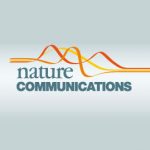Published on 2023/03/17 Research powered by Mightex’s Polygon1000 

Sheets, M. B., Tague, N., & Dunlop, M. J., An optogenetic toolkit for light-inducible antibiotic resistance. Nature Communications, (2023).


Check out this recent publication using the Polygon1000! The paper outlines research by Michael B. Sheets, Nathan Tague, and Mary J. Dunlop from Boston University using the Polygon to develop an optogenetic toolbox for inducing antibiotic resistance using 463nm light. We are excited to see more to come using this exciting toolbox!
Introduction
Within synthetic biology, antibiotics are used as a critical mechanism of control for selecting desired cells and regulating bacterial population growth. The precise control of antibiotic application and action has been somewhat limited in spatiotemporal domains. By developing a method of spatiotemporally controlling the resistance of antibiotic resistance in specific subpopulations of cells, Sheets and colleagues have opened the door to more complex and precise research opportunities and novel methods of harnessing a crucial tool in the synthetic biologist’s arsenal.
Methods & Findings
By using OptoCreVvd2, a cre-recombinase approach activated by blue light, the authors were able to selectively express their enzyme of interest in their cellular population of interest. Following an antibiotic application of lethal concentration, only the cells targeted with the photo-inducible antibiotic resistance were able to survive and proliferate.

Figure 1: Demonstration of blue-light inducible antibiotic resistance. a) Schematic of blue-light inducible Cre recombinase LoxP resistance to carbenicillin. b) measures of growth at different concentrations of carbenicillin following blue light exposure. c) Time-course growth of OptoCre-bla resistance activation constructs at different concentrations of carbenicillin following blue light exposure.
In order to demonstrate the spatial specificity of the light-inducible antibiotic resistance, Sheets and colleagues used the Polygon1000 coupled to a Nikon Ti2 chassis to direct patterned 463nm LED to portions of the FOV of a cellular population at 100x magnification. They results showed antibiotic resistance only occurred in the sections on which blue light had been targeted (see Fig. 2).

Figure 2: Demonstration of spatial control of photo-inducible antibiotic resistance using the Polygon 1000. Series of images shows time-lapse, blue border demonstrates area of 463nm patterned illumination.
Findings and Conclusion
The authors were able to demonstrate a novel light-inducible antibiotic resistance using 4 different antibiotics. They were able to demonstrate the spatiotemporal control of this tool using the Polygon. This development significantly shifts forward the available tools for examining the effects of antibiotics and cell population selectivity for synthetic biologists.
Catherine Thomas, PhD Senior Liaison and Development Scientist at Mightex
To read the full publication, please click here.



